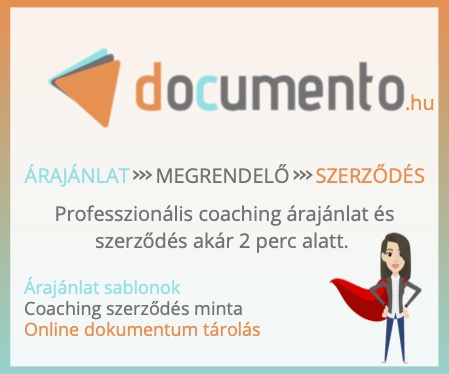December was a month of reflection for me, and while I was doing this—looking at the
Christmas lights and reading a book on ‘Action Research for the Classroom’ by
Glenn et al. (2023)—I found myself thinking about teaching, assessments, and
learners in general. I was seeking inspiration for my latest project, an action research
on integrative coaching in classrooms, and the following quote from this book really
struck me:
“…we should unearth unfair power dynamics and examples of hegemony in
the classroom… regarding teacher power” (Brookfield, 2017)
So true. If we think about this deeply, unchecked teacher power can cause long-term
negative impacts on learning.
The first thing that came to mind was my male chauvinistic geography teacher from
the early 2000s, who seemed to take pleasure in making derogatory remarks
towards girls in his class. We felt fear going into his lessons. Years later, in a different
context, I heard complaints about the quality of teaching in in-house training courses.
I remember some of the comments from course attendees:
“My teacher made me feel anxious. I wasn’t sure when they would raise their
voice or give us collective punishment. They were often impatient with us for
no reason. When I asked questions, they seemed irritated that I still didn’t
understand the topic. I couldn’t concentrate and don’t remember anything
from those lessons.”
“It was a ‘me’ show. The teacher’s ego was the centre of the training, and I
don’t remember the content. I just remember this person desperately trying to
demonstrate their greatness, and us trying to make sense of it all.”
On the other hand, I recall exceptional teaching experiences where I couldn’t wait for
the next session, where I felt inspired by the topic. The teacher was a role model,
and the classroom was a safe space for learning and experimentation. I am fortunate
to still be in contact with some of these exceptional individuals. They stretched us
every single moment, wanted more, and were curious. They demonstrated coaching
principles on top of general teaching strategies, and we felt valued—whether we
were 12, 19, 29, or 49 at the time.
I also love reading feedback forms from my training sessions or formal teaching
courses, evaluating what worked well with the learners. We must continuously
develop as reflective practitioners. If anyone thinks they are the finished article as a
teacher, they should reconsider this quickly.
All of the above made me reflect on what makes good teaching truly effective. Is it
the topic that sparks interest in learners, the way the training is delivered, or a bit of
both?
When learners want to wait for the next available slot just to have “The” lecturer (just
to avoid another lecturer) —the one with the caring reputation, the one willing to
explain the same topic five different ways until you understand, the one who goes
the extra mile to listen when you need to talk about something seemingly unrelated
but impacting your learning outcomes—this is when you think, “Yes, I am doing it
right.”
While reflecting on these experiences, trying to identify the reasons why some
teaching practices are more effective than others, something struck me: ego, self-
awareness, the importance of seeing the learner as a whole, and the necessity of
applying coaching principles.
Then, I thought about the power struggles in classrooms, the detrimental effects of
unchecked teacher power, and tried to understand what might lead a professional
down the path of demonstrating these negative qualities.
Clearly, I can’t climb into the minds of these individuals to fully understand the
reasons behind their actions when choosing how to deliver and transfer knowledge.
However, there are some interesting connections in the effective delivery of
education.
Over the last six years, I’ve been involved with coaching. Since 2009, I’ve studied
pedagogy, andragogy, and educational psychology, as well as delivered a number of
accredited courses in Further Education. I can confidently say that the most
successful individuals in any form of learning are those who critically reflect on their
work, create safe learning environments, and leave the “me show” outside of the
classroom. These individuals continually provide pastoral care, care about their
learners as whole people, and are curious. They believe that learners can achieve,
use open questioning, and demonstrate unconditional positive regard. They are not
just there to deliver a session, collect their pay check, and go home. Teaching, after
all, is a vocation, not just a job.
Does this mean that all good teachers are always good teachers? I don’t think so.
We would be living in a utopian world if that were the case. The teaching profession
is hard, with a high workload and burnout rates. Sometimes, teaching can feel like a
thankless task, especially with all the continuous red tape.
What I do know is that skills can be developed to create reflective practitioners who
are more likely to do justice to the profession. This is where coaching and reflection
come in—understanding our deep values and how they impact our teaching. It’s also
crucial to regularly check teacher power dynamics, to prevent these unchecked
powers from causing irreversible damage to learning, and in some cases, to learners’
mental health.
There can be many reasons why unchecked teacher power surfaces. Unfortunately,
I’ve seen this happen many times. The reasons could range from burnout and values
violations to the need to feel in control. None of these are effective for achieving
positive learning outcomes.
My main focus for this article is to encourage teachers and trainers to reflect,
improve, and develop skills—incorporating coaching principles into practice
to achieve more.
Values
When we consider values in coaching, we know that they direct the way we view life
and influence our behaviours. Our core values are deeply ingrained in our lives; they
serve as our North Star, guiding our decisions and actions. The interesting thing
about core values is that when they are violated or misaligned with our actions or
way of life, it causes internal conflict. This makes us feel inauthentic, which may lead
some learning professionals to demonstrate erratic behaviours. These are the
teachers I would call the “roller coasters”—you never know if it will be an easy ride or
if you’re heading into a deep pit of fear. These teachers often rely on power to bring
superficial harmony to the classroom, but inside, learners are in panic. Learning
becomes damaged beyond repair, and the visible behavioural changes in students
are just symptoms of deep-seated fear of punishment. When we are not living
authentically, we can’t achieve fulfilment or respond appropriately to external
pressures.
Social and cultural values are also important to consider, as they can shape
traditions and dynamics. Personal experiences determine how we react to situations.
Let’s consider the following example:
Learning Professional A had negative experiences with discrimination, and as a
result, equality became an essential value for them. In most conversations, this topic
surfaces, and the educator passionately voices their views on inequality. On the
surface, this may seem harmless, and it might be appropriate within the learning
context. However, the problem arises when someone disagrees with the topic.
Learning Professional A’s reaction might be to shut down the conversation quickly,
leaving the session atmosphere cold and the participants with an unfulfilled need.
This action communicates to learners that their opinions are inferior and unworthy of
lesson time.
Then we can look at another set of values, which we might want to categories as
social values or cultural values. Sometimes we are under the illusion that everybody
is sharing the same cultural and social values, however, if we think, deep down we
know that communities and tradition will results in a range of different experiences,
even if we experienced seemingly similar situations.
Here is where the role of deep, critical reflection comes in, supported, organised, or
spontaneous, which could be supported by supervision programmes where learning
practitioners are able to voice their concerns, challenges. Without self-awareness,
we are orbiting around the problem, unresolved, feeling unfulfilled and learners not
gaining knowledge as their energy is focusing on surviving the mood swings of the
teacher.
I reflected a lot in the last 16 years and evaluated situations. My top core value and
its impact on my early teaching experiences were really interesting. Due to the past
experiences of the women in my family around the lack of career prospects and
learning opportunities, learning became my key value. However, when I saw
individuals with enormous potential not valuing learning, it made me feel so angry
inside and at times, I voiced this. Now, many years later, I chose a better way to deal
with this. I understand the differences in values, but equally try to encourage others
to maximise their potential and support them on this journey. The no longer give in to
these turbulent feelings of others not confirming to my core value.
Power dynamics
We can’t debate that in a teaching profession, there is already a positional power
favouring the teachers as they have control over grading, control of the classroom
and decision making. On top of this, we can place other factors, such as cultural and
social differences, learners with protected characteristics will be impacted differently
with the positional power than others. Drivers for inclusion therefore even more
important.
I recall my professor’s words from when I was studying pedagogy, and geronto-
andragogy 16 years ago. He discussed the impact of teacher power and a concept
called black pedagogy (or poisonous pedagogy) by Katharina Rutschky (1977). This
concept refers to harmful educational practices, emphasizing discipline, obedience,
and submission to the point that it damages children’s mental health. The application
and the wrong application of this model raises serious ethical dilemmas, as it
prioritises control and conformity over the well-being of the learner. This approach
can lead to long-term psychological harm that may require trauma work in adulthood.
Another characteristic of this pedagogy is the complete suppression of self-
expression, further blocking the creation of safe learning environments.
When power dynamics are unchecked in a learning environment, it’s easy to push
individuals into their panic zones (Senninger, 2000). And as we know, learning in the
panic zone is limited. But what can we do to avoid this? I believe the most important
aspect is to provide time for teachers to reflect on their work at the end of each day,
followed by meaningful conversations with line managers about areas for
improvement. Creating a network within the teaching community, where peers offer
coaching and supervision-style support, can help embed the learning from these
reflections. Without this, we are like hamsters running on a wheel, doing the same
things and expecting different outcomes, slowly creeping towards burnout.
Reference:
Brookfield, S.D. (2017), ‘Becoming a critically reflective teachers’, 2 nd ed., San
Francisco, USA, Wiley / Jossey-Bass
Glenn, M. Sullivan, B. Roche, M. McDonagh, C. (2023), ‘Action Learning for the
classroom, A guide to values-based research in practice. Routledge, London.
Rutschky, K (1977 / 1988), Schwarze Pädagogik: Quellen zur Naturgeschichte der
bürgerlichen Erziehungm, Ullstein
Senninger, T. (2000). The learning zone model—Thempra social pedagogy.

























